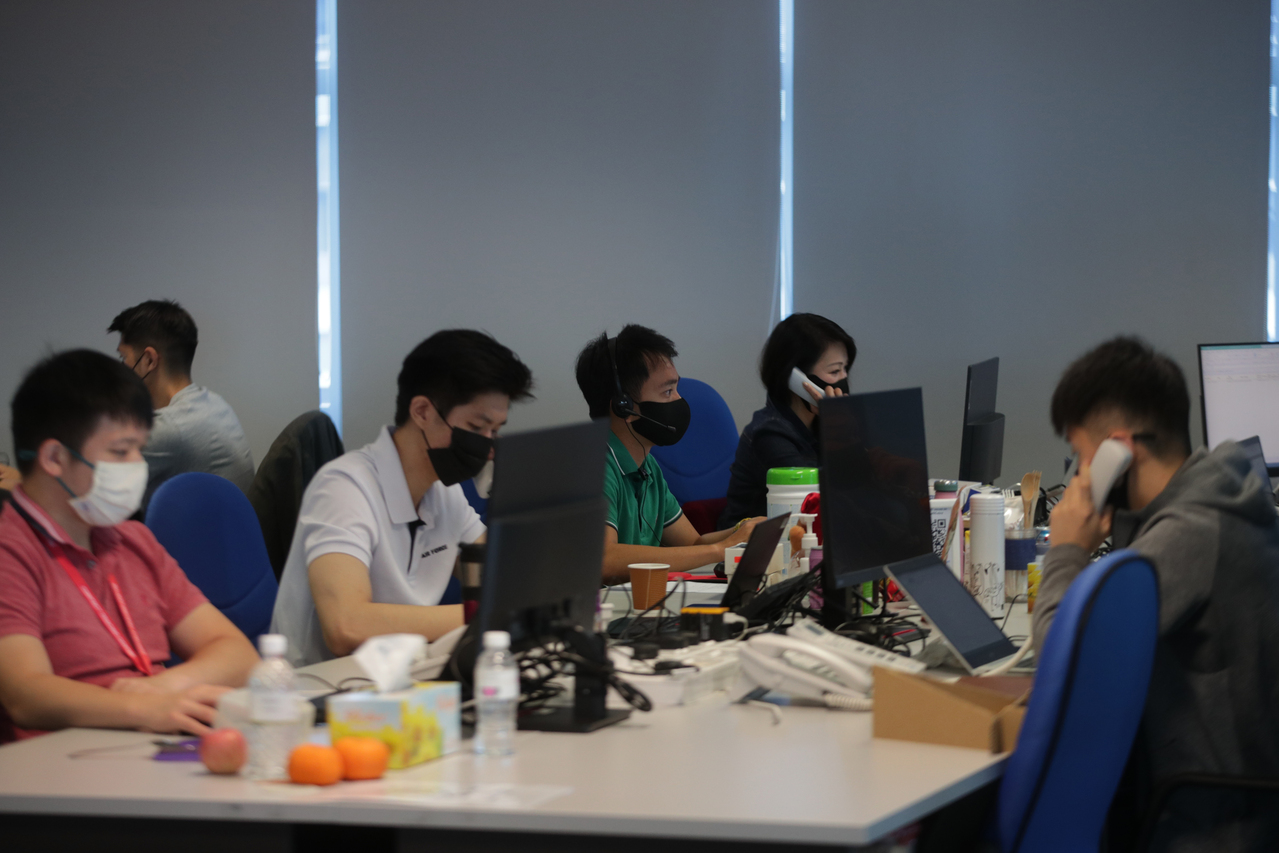More contact tracers needed in Singapore as Covid-19 cases rise
Sign up now: Get ST's newsletters delivered to your inbox

The current number of 500 tracers is still less than at the height of the two-month circuit breaker period.
ST PHOTO: TIMOTHY DAVID
Kenny Chee, Hariz Baharudin
Follow topic:
SINGAPORE - The pool of contact tracers at the Ministry of Health (MOH) has grown from 300 to about 500 people to tackle a jump in Covid-19 cases as more contagious variants of the virus surface.
The ministry said it is vital that close contacts of infected patients can be identified swiftly and isolated to shut down further spread of the coronavirus.
The bulk of the new manpower at MOH's contact tracing centre is from the Singapore Armed Forces (SAF), which provided about 160 individuals.
Separately, the police contracted three organisations in a $327,000 tender awarded last month to provide supporting manpower.
More details were not available from the police, but it is understood that last year, a similar tender was also called. The police have lent help to contact tracing efforts here since last year.
Professor Vernon Lee, who heads the MOH contact tracing centre, told The Straits Times that the current number of 500 tracers is still less than at the height of the two-month circuit breaker period, which began in April last year.
At one point then, the centre had about 1,000 people to cope with the huge volume of new daily virus cases, which could exceed 1,000 on some days.
In comparison, new daily cases in the past two months have rarely been more than 50.
The recent spike in cases prompted the Government last month to put in place extra safety measures, returning Singapore to heightened alert under phase two of its reopening, from phase three.
This year's spike is smaller than last year's, but the contact tracing has expanded in volume.
"Each case is now more complex because of the availability of a lot more data," said Prof Lee. This includes TraceTogether data, which automatically logs a Covid-19 patient's close contacts.
More than 90 per cent of the population uses either the TraceTogether app or token.
This means that more resources are needed to analyse the data, but tracers are now working smarter with more data analysis tools, said Prof Lee.
Geospatial tools, for instance, help find potential links between cases through their locations. Such tools reportedly helped the authorities figure out that a Bukit Merah View wet market was the source of many recent infections.
Compared with last year, close contacts must be quickly found because of more transmissible Covid-19 variants, Prof Lee said.
Tests are also conducted in targeted ways to help tracers zero in on suspected cases faster. For instance, people at Housing Board blocks, shops and markets where cases surfaced have been tested.
"With all these tools, we were able to identify cases, test them faster and ring-fence them," said Prof Lee. "We felt that we didn't need go into a circuit breaker as we were able to control the numbers just before phase two (heightened alert)."
Contact tracer Faris Abdul Wahab, 50, said data such as that from TraceTogether helps fill in gaps as more people use the system, but he still needs to verify the information with cases. And when calling them, the human touch is vital.
Mr Faris, a flight steward with Singapore Airlines, said communication issues are among the biggest challenges.
People can be uncooperative, aggressive and abusive on the phone. And some, like migrant workers, may simply not speak English well.
"We try to be patient," he said.
They may have to ask questions in different ways to get answers.
But most people are cooperative.
Said Lieutenant Isabel Seah, 22, an SAF infantry officer: "We're always appreciative when they're very patient with us because contact tracing can be quite tedious."
Another challenge is that some patients think the contact tracers who call them are scammers. This is likely due to the surge in scams here in the past year.
Lt Seah, who helped MOH with contact tracing last year, said that some scammers have also posed as officers from the ministry, so some patients might be reluctant to share information with the bona fide tracers.
"It slows down the contact tracing process, which is time sensitive," she said. The extra time spent on verifying a tracer's identity can take anything from minutes to hours.
MOH has said that patients can verify the identity of a contact tracer by taking down the number he called from, then dial MOH's hotline on 1800-333-9999 and provide the caller's number.
The ministry added that it will not ask people for their financial details when conducting tracing or divulge any details of confirmed cases.
It will also not ask patients to collect documents from the ministry, unless they have existing business with MOH.
"We do need accurate accounts of what happened during (patients') infectious period so that we can take the correct actions," said Lt Seah. This may include deciding whether contacts need to be quarantined, for instance.
The article was edited for clarity.

